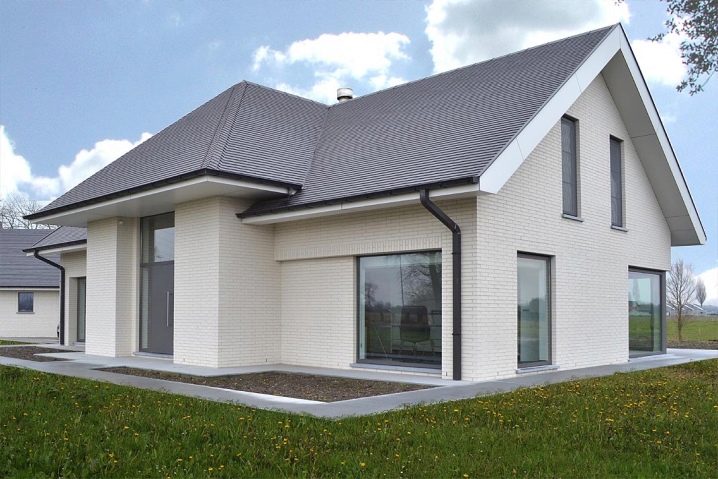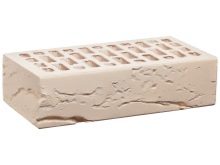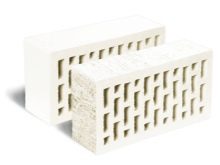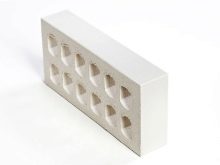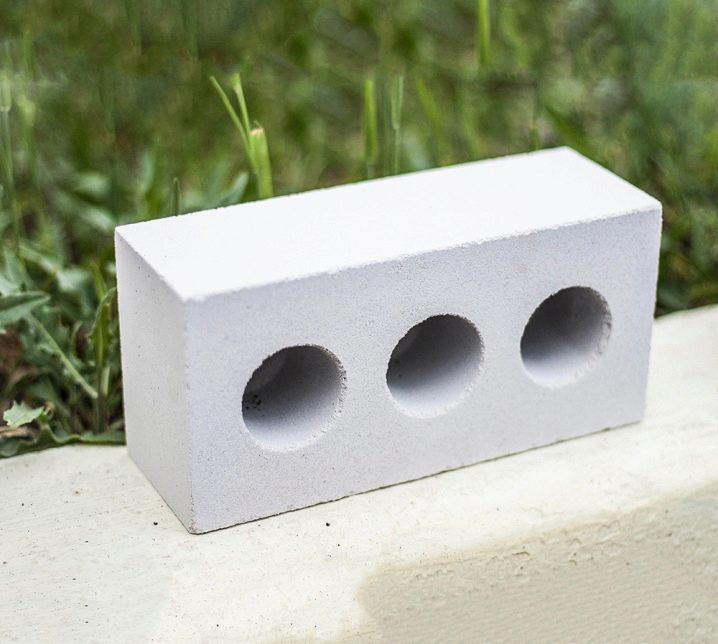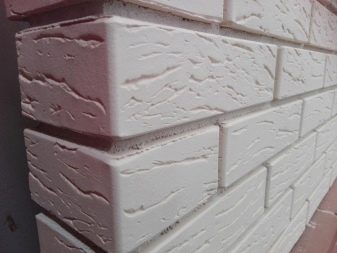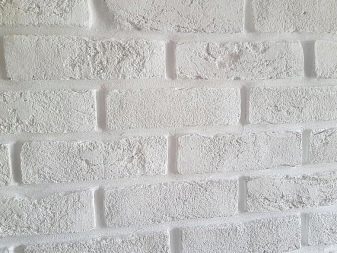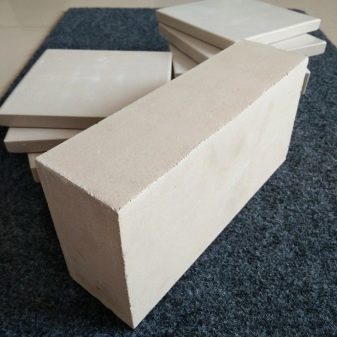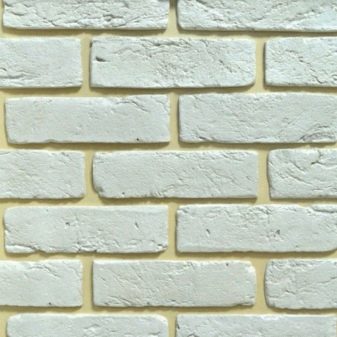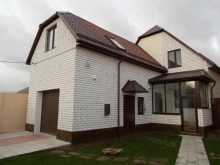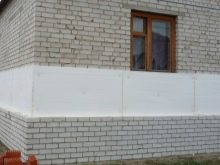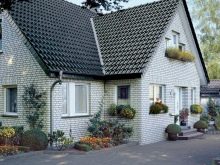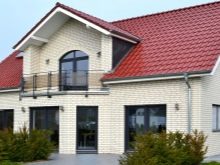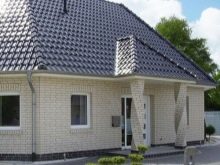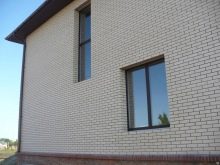Use white facing bricks
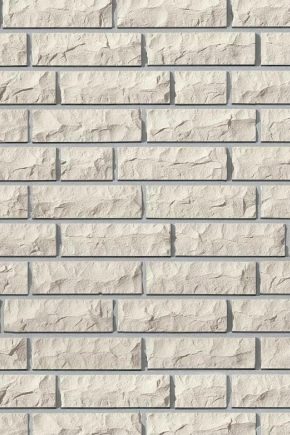
White facing bricks are very popular among builders. Its excellent characteristics and attractive appearance made this material indispensable in decorating the facades of buildings. It does not require additional maintenance. White brick does not need to be painted, it is not covered with mold and never fades. In addition, a white ceramic block is considered a fireproof material. The house of such a product will never light up.
Kinds
Such products are mainly used for lining houses. Manufacturers produce a variety of blocks, differing in some parameters:
- invoice;
- thick;
- form;
- material.
The silicate white brick is considered the most popular and demanded. The technological process of manufacturing such units is quite simple. That is why this product has a low cost. The masonry of silicate blocks has a high degree of noise insulation. The negative qualities include loss of the original color, as well as poor thermal insulation properties. Due to the latter factor, builders have to make additional thermal insulation.
To create a hyper pressed material, the latest technological processes are used. These products have a high strength factor. Such blocks are designed for long life. The material is excellent in areas of seismic instability.
White clinker material differs from its analogues by its positive characteristics. It retains its original properties even in adverse climate. Houses from such material receive excellent thermal insulation, as well as a high level of sound insulation. Increased wear resistance allows to operate this material for a long time.A one-and-a-half clinker block is considered to be a universal option used for cladding buildings.
Chamotte white material is considered a refractory building product. It is used for lining furnaces, they are lined with home fireplaces, with its help, they are cladding the facades of buildings. The modern market represents facing products of the European and domestic standard. All products are divided into two subgroups:
- NF - normal (240x115x71 mm);
- DF - thin (240x115x52 mm).
The second group meets the requirements of architectural classics. When choosing such a material, you must make sure that all blocks have the same standard. Otherwise it will be very difficult to create a beautiful lining.
Benefits
The positive characteristics of such products are associated with the material from which they are made. After appropriate heat treatment, the sand changes its structure, acquiring the properties of glass. As a result, the material acquires several valuable qualities.
- The strength of the white block is much higher than that of the usual red (about 2 times). Each product is marked with the letter “M” and a number indicating the value of the strength factor (for example, M400).
- White brick has a high frost resistance.It is able to withstand 200 cycles of temperature difference from freezing to subsequent defrosting.
- Slow moisture absorption is an important quality. It allows the white brick to retain its properties in any, even the biggest frost (minus 50 degrees).
- Facing white brick does not burn. He calmly tolerates heat.
- Due to the increased density coefficient, high-rise buildings can be erected from such a brick.
- Manufacturers produce such a brick in different shades. Although the colors of such products look a little faded when compared to ceramic red brick, which stands out for its bright color.
With all its positive qualities, facing white brick has several disadvantages. The main is considered a low level of moisture protection. Even with very slow absorption of water, this process leads to the fact that the silicate brick is completely wet. As a result, its characteristics are sharply reduced. Therefore, a white facing brick is not allowed to be used in places where it will have to constantly experience the effects of water (for example, the foundation).
"White pearls"
This type of ceramic facing brick is called “White Pearl” because of its color. It is perfectly combined with different building materials.
From it, you can completely build a building, and you can only make the walls lined with other materials:
- porous blocks;
- red silicate brick;
- foam concrete;
- aerated concrete.
The product "White Pearl" is perfectly combined with any colors from classic red to dark brown.
Special Purpose Material
Usually, a special-purpose product is considered to be a material that has a non-standard form, as well as dimensions that are required for the performance of a specific task. Several non-standard options belong to the group of such bricks.
- Evrokirpich Such a product differs from the standard in its width. It reaches 85 mm. This option is considered facing. It is used as a designer material when decorating facades.
- White modular brick. It differs from standard products only in width and length (138x288 mm). Height remains unchanged - 65 mm. The modular brick is very similar to ridge plates.It also has special projections that allow for precise docking.
- White three-quarter brick. It differs from the classic product only in its length. It is slightly shorter, reaching only 180 mm.
- White half brick. Already from the name it becomes clear that its length reaches only half of the standard size - 120 mm.
- White quarter brick. The length is one quarter of the standard value - 60 mm.
Conclusion
No matter how beautiful and durable the construction is, over time it will require finishing work. To “ennoble” the old building, give it a beautiful appearance, reliably protect it from weathering, you can use brick cladding. It is considered the most reliable, as well as the simplest way to finish. This will help to carry out the restoration work, turn the old house into a modern one, significantly insulate it. After such decoration, the building will stand for many more years, attracting passersby with its beautiful appearance.
See the video below for the secrets of working with white facing bricks.
